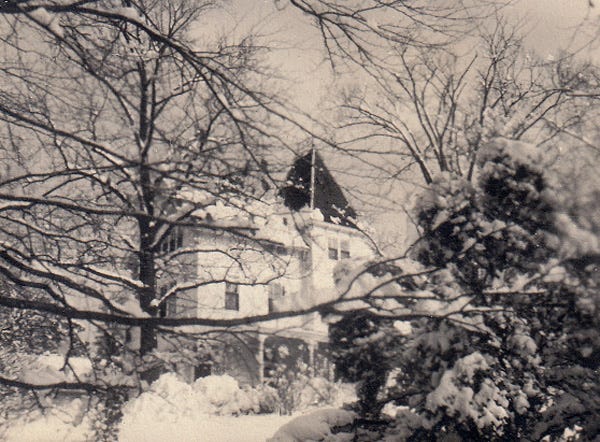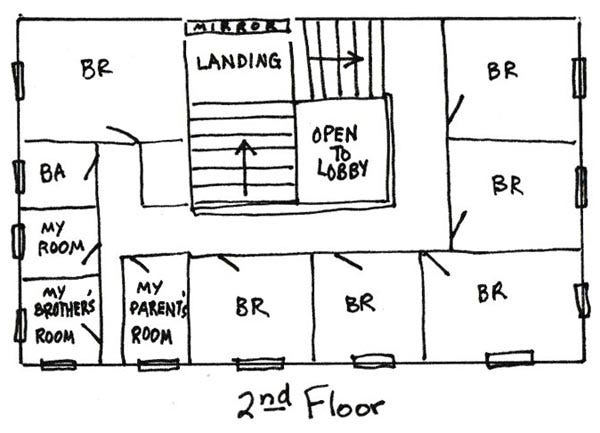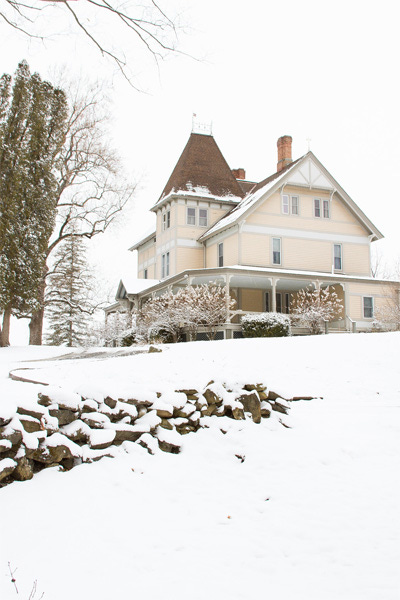What I Learned in the Castle
What does an old hotel in the Hudson Valley have to do with the struggle for democracy in Hungary?
When I was eleven, for eight months my family lived in a “castle” in the Hudson Valley. It was really an old hotel with a long shady driveway, a turret, fields, woods and a barn. My Hungarian aunt and uncle had bought the property for weekend visits away from their small chemical company and apartment in a building under the el in Brooklyn, NY.
They called the big house “Eger” (egg’-air), after the city in northern Hungary.
In the entrance hall of Eger there was a wide staircase going up to the second floor, with a huge mirror on the landing. In the mirror you could see yourself walking up the stairs, with the rail of the upper hall above you.
Once, before we came, my aunt and uncle were staying there and woke in the night to sounds on the stairs. It was a thief! My uncle stood with his gun at the rail, his reflection in the mirror, and warned the man to leave. He did!
One of the large hotel bedrooms upstairs had been divided into three small rooms with a hallway between them. My brother, my parents, and I each had a room.
One day my room was filled with acrid-smelling Dutch elm beetles coming in around the window screen. Later I learned they were part of the wide devastation of native American elm trees that were unable to resist the imported disease.
And there was a ghost at Eger! My mother told us how, during the night, she saw a man in an old-fashioned military uniform quietly standing in their bedroom doorway. To this day I believe her.
The house had narrow back stairs for the hotel servants, going from the kitchen with its great wooden cupboards and iron stove, up to the third floor. Up there my brother and I explored a warren of tiny rooms filled with massive furniture, beds, and old bathroom fixtures. From the turret windows you could see the Hudson River far below the trees.
In the large parlor downstairs I discovered my aunt’s stack of McCall’s and Ladies Home Journal magazines with 1950’s articles of advice for housewives and illustrated short fiction. I think they were my mentors of a kind. Oh, woe!
I remember a story called, “Love Me, Love My Pink Refrigerator”. And much later I actually took with me into my marriage an article with recipes and tips for dinners guaranteed to make a man happy.
I loved the artwork in these magazines and tried to copy it.
[T]he formulaic embraces appearing in the women's magazines … most always showed a blonde female with dark-penciled brows, red lipstick, and a "peaches and cream" complexion who was paired with a tanned male, whose face was often half-hidden. If an artist objected to the specifics of the assignment, there were many others waiting in the wings to do the work.
But my favorite memory from our life in the castle was the large group of young men and women from Hungary who came to Eger for a week in the summer. They camped out in a small village of tents. Every evening they sang Hungarian songs and sometimes danced in traditional dress.
Then in 1954, very soon after the students went home, the Hungarian people with America’s encouragement rose up against the government of the Hungarian People’s Republic, and against the policies imposed on them by the USSR.
Support from the United States never came. The Hungarian uprising in 1956 failed. But now in 2022 America and other free-world countries are supplying aid to Ukraine in their fight against Russian aggression.
The future of democracy everywhere is still unknown.








I enjoyed the story.
Your recollections of living in the old hotel and experience of seeing the Hungarians is poignant, Deda.
Yes, the future of democracies everywhere is precarious. I worry greatly.
My daughter and her family live in the beautiful Hudson Valley.